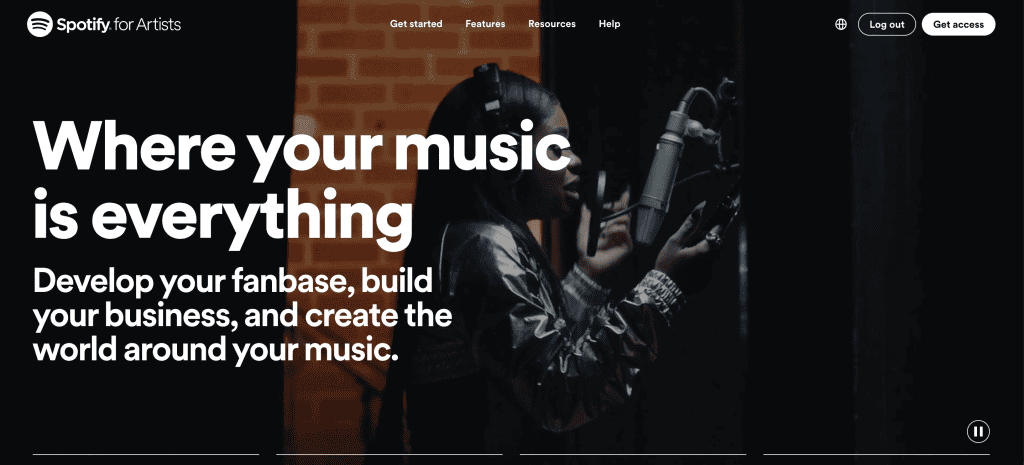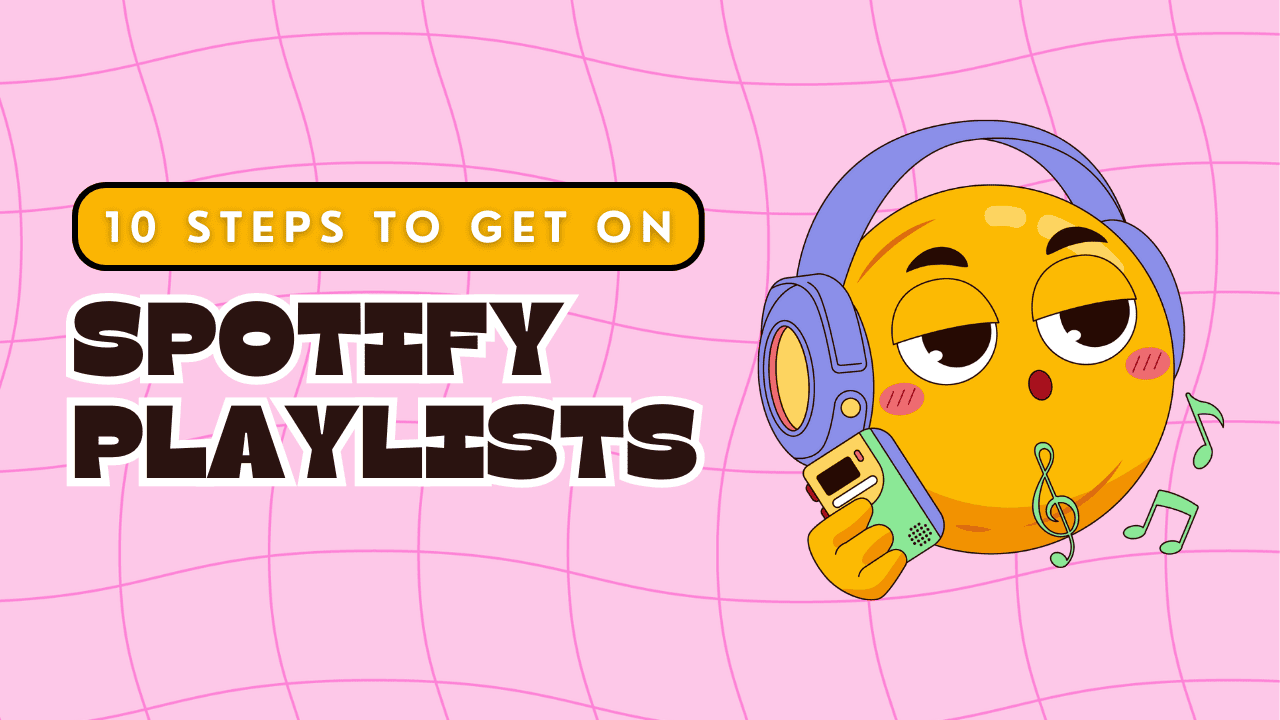Securing placement on Spotify playlists is a significant objective for numerous musicians in today’s music industry. So, how can you achieve this goal for yourself? We’ve compiled a comprehensive guide that covers everything you need to know to get on Spotify playlists.
We’ll begin with some background information to provide context, but feel free to jump straight to the step-by-step guide below if you prefer.
Let’s dive in!
Is It Important to Get Music on Spotify Playlists?
Playlists play a pivotal role in shaping music discovery and curation on Spotify.
From an algorithmic standpoint, they enhance listeners’ experiences by delivering a blend of familiar tracks and new discoveries tailored to their preferences.
Yet, playlists are also a form of curation. They serve as platforms to showcase music in various contexts, whether it’s spotlighting a specific genre, regional scene, or artistic approach. Additionally, playlists aid listeners in integrating music seamlessly into specific activities or moods.
For artists, playlists offer several benefits:
1. Connecting your music with audiences who are most likely to appreciate it.
2. Increasing your overall exposure and visibility within the platform.
3. Providing insights into how listeners perceive and engage with your music.
4. Offering valuable insights into the broader music scene and community you belong to.
Ultimately, being featured on playlists can lead to increased streams, improved royalty earnings, and additional opportunities for advancement in your musical journey.
How To Get on Spotify Playlists?
1. Make yourself known on Spotify
If you haven’t already, your initial task is to get your music uploaded to Spotify.
The most effective method is to independently release your music.
It’s crucial to understand that for editorial playlists, you can only submit music that hasn’t been released yet.
Therefore, it’s advisable to establish a presence on Spotify by releasing a smaller single before progressing to an editorial pitch.
2. Get the Most Out of Spotify for Artists

Spotify for Artists is like a Swiss Army knife for musicians—it offers various tools to help you shape your musical identity, understand your audience better, and more. Take advantage of these features by setting up artist images to refine your presence on the platform, crafting a compelling and regularly updated artist bio, and diving into the analytics tools provided.
3. Expand Your Reach Beyond Spotify
While getting your music on playlists is crucial, don’t overlook the importance of extending your efforts beyond Spotify’s borders. Building a strong social media following, establishing a distinctive and memorable brand, and actively participating in your music scene all contribute to boosting your overall visibility.
Over time, this expanded presence can translate into more opportunities for playlist placements and broader recognition. Don’t forget to direct your social media followers to your Spotify for Artists profile by including links in your bios, and consider embedding your profile on your website if you have one.
4. Conduct Your Research
While honesty and authenticity in your musical craft are paramount, it’s also valuable to understand the characteristics of successfully playlisted songs and how they vary depending on the context.
Different types of playlists may lean towards featuring songs with specific traits such as length, structure, or energy level. Take note of these characteristics and consider how they align with the playlists you’re targeting.
You can incorporate this knowledge into your music-making process without sacrificing the originality of your work by simply trying to emulate popular artists.
5. Select the Appropriate Playlists
While aiming for playlists with high traffic might seem appealing, it’s essential to approach this strategically. When reaching out to creators of listener playlists or pitching to Spotify’s editorial team, it’s crucial to demonstrate a genuine understanding of where your music fits in.
Prioritize playlists that are most relevant to your music style and genre. By making careful and intentional choices, you increase your chances of getting playlisted significantly.
6. Emphasize Listener Playlists First
While the focus may often be on editorial playlists, it’s beneficial to view the broader playlist ecosystem through a similar lens.
Identify several highly relevant listener playlists with substantial follower counts and prioritize them before pursuing editorial playlists. Building visibility in listener playlists over time can enhance the “flagging” of your music, increasing the likelihood of further playlist placements.
7. Engage with Listener Playlist Curators
Many playlist creators maintain dedicated social media profiles for their curation efforts.
You can locate them by searching their Spotify profile name on various social platforms. Once found, engage with them and reach out via direct message.
Additionally, these creators often include their email addresses for playlist creation purposes in their social media bios.
Before pitching your music, it’s advisable to establish a connection and express appreciation for their work.
You can also share your tracks in the Music Exchange section of the Spotify Community forums. Make sure to post in threads explicitly seeking songs for playlist inclusion.

Ensure that the playlists align stylistically with your music, and always approach interactions with respect to avoid being perceived as spammy.
8. Craft Your Masterpiece, but Keep It Under Wraps for Now
Imagine you’re steadily building visibility for your music through listener playlists and promotions off of Spotify, and your music is gradually finding its way into personalized playlists through the algorithm.
During this period, dedicate time to creating a new release that showcases the pinnacle of your musical abilities thus far.
Consider an EP format for this endeavor. Crafting three or four tracks will provide a selection of options, allowing you to choose the standout song. Plus, it’s a quicker process compared to developing a full album.
Once this release is complete and you’ve identified the strongest track, resist the urge to release it immediately. Remember, you’ll need ample time in advance for your editorial pitch.
9. Prepare for Your Release
When uploading your release to your distributor, it’s wise to schedule the release date at least three to four weeks in advance.
There are two primary reasons for this. Firstly, Spotify’s editorial playlist team requires at least one week to review your playlist pitch. Secondly, you’ll need sufficient time to promote your release effectively.
While promoting your music, ensure your Spotify for Artists profile remains robust and up-to-date. Take advantage of features like Canvas to enhance your profile’s visual appeal.
While your artist profile automatically showcases the listener playlists you’ve been featured on, don’t forget to highlight your latest release with your Artist Pick.
A well-developed and visually appealing presence on the platform can significantly enhance your visibility and engagement.
10. Pitch Your Song via Spotify for Artists
Once you’ve submitted your release to your distributor and set the date, it’s time for your pitch.
Keep in mind that Spotify’s editorial team requires at least one week to review your pitch, but it’s advisable to submit it well in advance. Many artists submit their pitches two or three weeks ahead to ensure consideration.
You can submit your editorial playlist pitch through the online form available in Spotify for Artists.
In the Music section of your Spotify for Artists account, navigate to the Upcoming tab to find your upcoming releases. Please note that it may take a few days for an upcoming release to appear here, depending on your distributor.
When you select the song you wish to pitch, you’ll be directed to the pitch form, where you can provide detailed and accurate information. This includes genre, style tags, instrumentation, mood, and a crucial 500-character description for the song you’re pitching.
Final thoughts
While it’s crucial to highlight some of your achievements as an artist and discuss your promotion plans for the release, avoid using up the entire character count on this.
Maintain a balance between self-promotion and offering an authentic insight into the song’s meaning, the creative process behind it, the community it belongs to, or the emotions it aims to evoke in listeners.
Providing such insights will convey the song’s significance and assist the editorial team in placing it within the context of other artists and playlists.
After submitting your pitch, stay committed to promoting the release and ensuring continued engagement with your listeners and followers!

